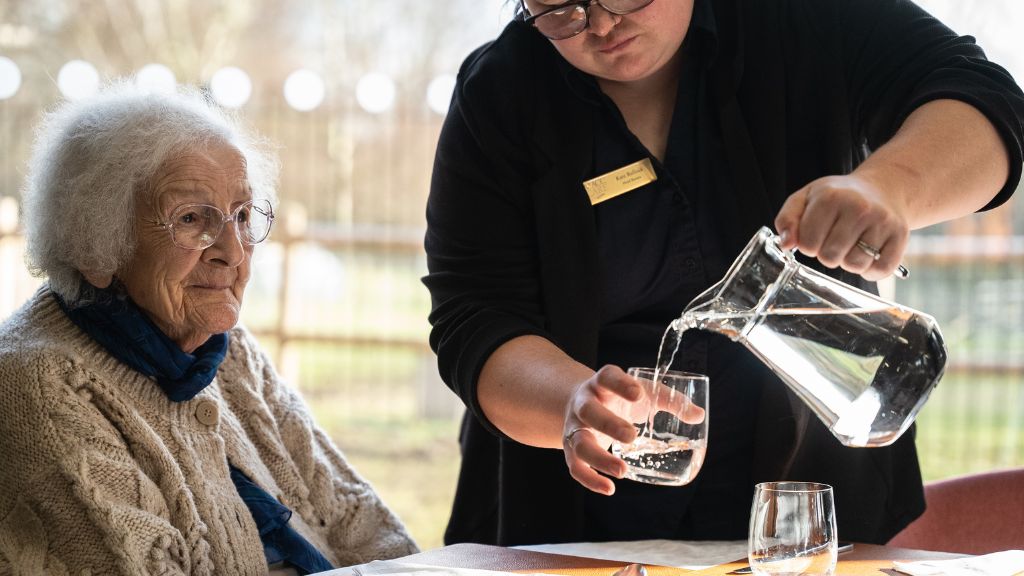On the road: Lively later living

Wallacea Living plans to open its first high-end retirement community in central London in 2026. Charlotte Goddard gets a glimpse into the future with a tour of the show suite
On London’s Edgeware Road something new is taking shape. A luxury apartment block is going up, nestled in its own landscaped gardens with amenities including a landscaped garden, swimming pool and spa, restaurant, private cinema and library bar. When it opens in early 2026, this will be Wallacea Living’s first integrated retirement community, comprising 104 one and two-bedroom high-end apartments and two-bedroom penthouses aimed at the over-65s.
While the block itself is still under construction, Wallacea Living has created a taster of what apartment owners can expect in the next block along. Skirting a building site through what seems to be a secret door, the visitor steps into a stylish lounge area, with bespoke artwork and vintage artifacts on show. The colourful, abstract design is a world away from the country house boutique hotel look, instead leaning towards a mid-century urban feel, drawing on the radical design changes of the 1960s, 70s and beyond. It’s almost like setting foot into the set of an early James Bond film.
“The reason behind the aesthetic is trying to shatter the idea of what people think a care home looks like,” says Paul Morgan, co-founder and chief executive of Wallacea Living.
“If you think of our demographic, when they were 25, it was the swinging sixties, so don’t be scared about design, don’t dumb it down,” explains Andrew Endean, head of real estate. A multifunction space has a clean, open feel, with large mirrors and line pictures of dancers giving a sense of movement and activity. Meanwhile the glamourous bar area draws on the 1920s and 1930s, for a New York, art deco feel.
“It was important to create a space that appeals to men and women, as typically clubs are quite masculine,” says Endean. The ground floor of the community will house a restaurant which will be open to the public as well as residents. “Bringing other people in adds vitality,” says Morgan.
Wallacea Living’s creative director, Sue Timney, chair of the Chelsea Arts Club, professor and fellow of The Royal College of Art and a past president and visiting professor of the British Institute of Interior Design, worked with architecture and design practice Jestico + Whiles to create the interiors of the community.
We take a lift up to the show apartment with its balcony and view over London. Prices for the new apartments start from £950,000. This is a demographic that is used to urban living, and keen to maintain connections with their friends. The community is located a stone’s throw from the theatres, restaurants, parks and many amenities of central London.
Thought has gone into all the fixtures and fittings, from reinforced walls in the wetrooms so aids can be easily fitted if needed, to an oven door that folds in on itself so people don’t have to lean over it, which can lead to burns. “There are little things we have identified for this demographic to make their lives easier but not things that stand out; we don’t want people to feel stigmatised,” says Fionna Cannon, care and wellbeing director, who herself started out as a carer.
Every apartment has been fitted with an emergency response system, and comes with a sensor, which delivers unobtrusive monitoring by detecting movement. Other sensors can be added if required. “We will be able to track deterioration in sleep patterns for example, and step in and support with that,” explains Cannon.
A six-monthly health and wellbeing MOT will track indicators such as bone mass and blood pressure, but residents can also use futuristic-looking machines to check their own health at any time “Nine times out of ten when people that age enter hospital it’s because triggers haven’t been picked up,” says Cannon. “If we can prevent a fall from happening, or a UTI getting so bad that someone ends up in hospital, that’s a good thing.”
Every person moving into the community will discuss their likes and dislikes, and their own background with the wellbeing manager. “We want to keep people connected with their hobbies and introduce them to new things, finding things in the local community for them to do,” says Cannon.
“People have got 20 or 30 years after retirement – rather than what has been traditional, people think about slowing down, it is the other way around,” says Morgan.




